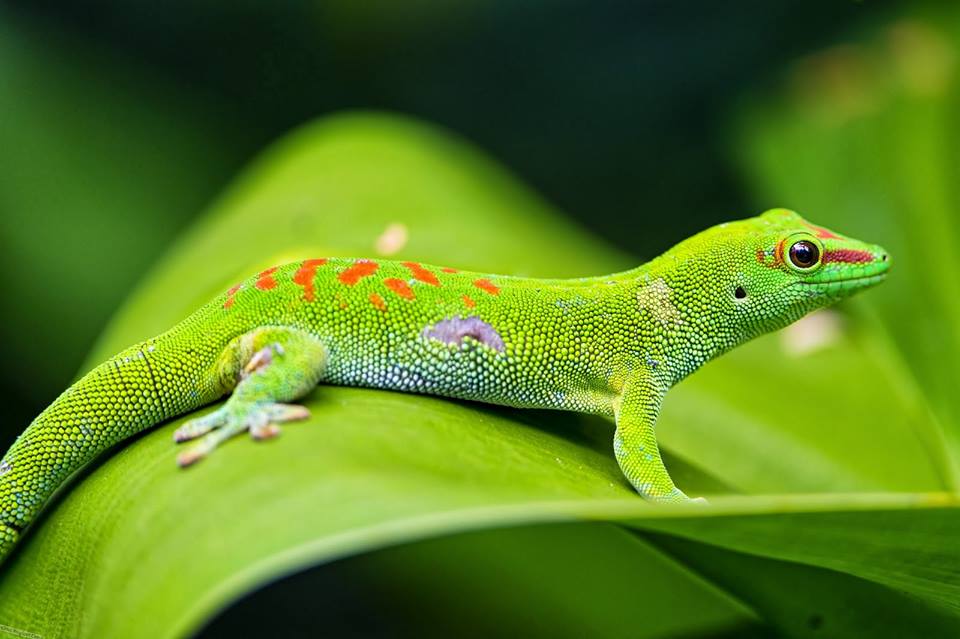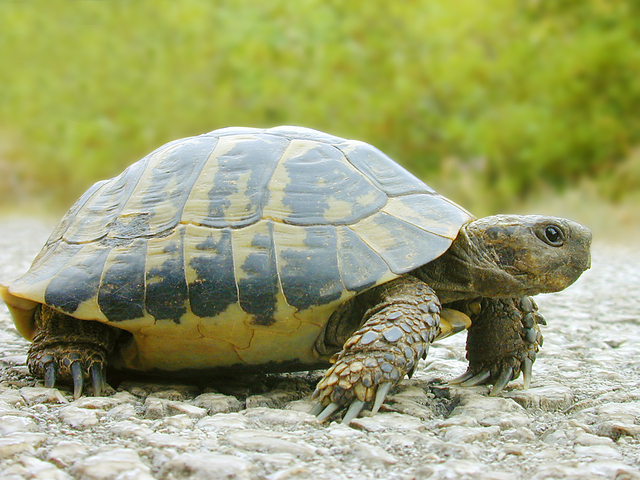Lizard

In Central America lives one of the most interesting lizards on earth – the green basilisk lizard.
This lizard is sometimes called a double-crested basilisk. It is bright green and has a fringe on its back. It has a long, long tail.
Green basilisks spend most of their time in trees, but they always live near water. If they sense danger,
they drop to the water to make their escape.
Crocodile

Crocodiles are reptiles like snakes and lizards, but did you know they’re more closely related to birds and extinct dinosaurs? It’s true.
Crocodiles are about the closest we’ll get to the ancient dinosaurs. Crocodiles have been around for 55 million years.
They live in rivers, lakes and wetlands in many warm parts of the world.
The crocodilian family includes alligators, crocodiles, caimans, and gharials. All these lizards have long snouts, sharp teeth and keen hunting skills. There are a few differences, though.
Turtle

Have you ever wondered what the difference is between a tortoise and a turtle? Both animals are reptiles; both lay eggs and both have hard, bony shells. Tortoises live on land, in deserts, grasslands and forests.
Turtles have webbed feet and live in rivers, lakes or even the ocean. They only leave the water to lay their eggs.
A terrapin is a turtle that spends time both in and out of the water. It always lives close to water, though, and can be found in swamps and wetlands.
Whatever you call them, turtles are interesting animals. Their bony shell is covered in scales. It is attached to their backbone and can’t be removed. Some turtles can duck their head and limbs inside their shell for protection.
Not all turtles can do this.
Click HERE for a surprise!
INTERESTING FACTS ABOUT REPTILES
The eyes have it: A little known fact by many herp enthusiasts is that a variety of lizard species possess what science refers to as a third eye.
Monitor lizards, bearded dragons and even green iguanas as well as a whole host of other saurian and Sphenodon possess a parietal or vestigial eye.
Not only does the parietal eye which lays atop the head interpret shadows of light and dark, but it connects to a pineal sac producing the sleep
regulating hormone melatonin much the way the pineal gland in a human being functions.
Naturally peculiar: With the huge increase in demand for the latest morph, we sometimes forget that all of this creative magic begins with natural anomalies.
Through selective breeding we have been able to characterize specific traits often creating unimaginable beauty in specimens which are naturally bland.
Albino, leucistic and piebald animals have all occurred as a natural anomaly first which triggered the curious to selectively breed them into the trend setters of today.
Lately, even scale-less snakes which have been known from wild caught animals since the 1940s have taken the world by storm!
A shell of a system: Though the shell of a turtle or tortoise certainly acts as an amazing protective barrier for the otherwise vulnerable reptile, this bony,
keratin covered apparatus is actually sensitive to physical contact. Some chelonians show it more than others, but turtles and tortoises need to “feel” with their shells.
Because it is a living, growing part of the body, a turtle’s sensitive shell often acts as a first alert to let the reptile know that something harmful is about to occur.
Sneaking up behind a snapping turtle and gently touching the back of the carapace with an object will demonstrate very well just how sensitive the shell can actually be as
the animal readjusts its orientation to confront the sensation!


